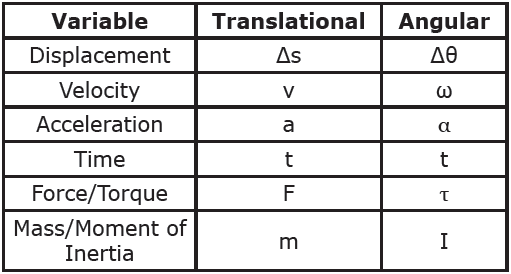Assessing the kinetic energy of moving objects in a system can be difficult. To calculate kinetic energy, use relative velocities. Using these velocities as input makes the calculation process more predictable, simplifying it and giving a more accurate representation of the energy exchanged during an impact.

Calculate the velocity
To calculate the kinetic energy, you must determine the object’s velocity. The distance the object travels in a given time is called velocity. The formula for velocity is V = d/t. The object’s velocity is related to its energy. For example, if a person walking down the central aisle of a subway car travels at 15 km/h, their kinetic energy is three times as much as a 75 kg person walking at the same speed.
Although the kinetic energy of an object’s motion can vary depending on its frame, it is always positive. It is equal to the sum of mass and speed. If the object is moving in a confined space, its kinetic energy will be smaller than if it is moving in the air.
First, determine the mass (m), and velocity (v). This will allow you to calculate the kinetic energy. You can also calculate the mass of a particle simply by looking up its mass. You will then need to convert km into m. However, this step is not necessary as you can find out the mass of a neutron using the mass the particle.
Newtonian mechanics is the basis of the formula for kinetic energie. When an object is moving at a constant speed, the kinetic energy of that object is equal to its mass times its velocity. For objects moving at a faster speed than the speed of light, however, the kinetic energy is measured in joules.
Calculate the kinetic energy
To calculate the kinetic energy of a moving object, you must multiply its mass by the square of its velocity. The formula for kinetic energy is the same as that of potential energy. Kinetic energy is simply the energy required to move an object, from rest to its current velocity.
To calculate the kinetic energy of a bullet, you will need to know its mass and its speed. You will also need to enter the measurement unit. The default unit is the Joule, but you can change it to a different measurement if you wish. Another factor that must be considered is the escape speed – the minimum speed at which a bullet will escape from the gravitational force of the earth.
Kinetic energy is defined as the energy contained in an object when it moves. The joule is the unit of measurement for kinetic energie. This unit is equal in size to one kilogram meter squared over one second. The standard unit of kinetic energy is the joule.
A four-kilogram body moving at 36 m/s will have twelve thousand joules of kinetic energy before it hits water. Comparing that to an eight-kilogram body, you will see that the kinetic energy of a 5.0 kg body is threefold greater than the 8.0.
The kinetic energy equation can also be used to calculate dynamic pressure of fluids. To calculate the fluid’s dynamic pressure, you can replace mass with density and solve KE. Once you have calculated the kinetic energy of a fluid, you can calculate its dynamic pressure using the kinetic energy calculator.
Calculate the kinetic energy per unit volume
The kinetic energy per unit volume is equal to the fluid’s mass divided by its volume. This quantity is also known as the dynamic pressure. It can be calculated by using a kinetic energy calculator. This calculator will also consider the fluid’s density.
The kinetic energy formula helps to understand how much mass an object has and how that mass affects its velocity. This formula can be applied to all objects in motion, even people. Kinetic energy is the work required to accelerate an object, whether it is moving upward or downward, and it remains the same whether the object reaches or decelerates from a certain speed.
Calculate the kinetic energie of an object
A kinetic energy calculator can be used to calculate the kinetic energies of an object. These calculators can be used in both imperial and metric units. They give the result either in joules, foot-pounds, or watt-hours. You can also use the calculator to calculate mass and velocity so you can see how much energy was transferred to an object while it is moving.
Kinetic energy refers to the work required to propel an object forward. An object that is stationary will not move until a force causes it. That force is called net force and consists of gravity and friction. As the object continues to move, it acquires kinetic energy, which is energy acquired from its motion. It can also retain kinetic energy if it slows down or comes to a halt.
In a system with two or more moving objects, the kinetic energy of each object is equal to the square of their velocity. This reduces calculations and gives a better understanding of energy transfer during collision. You can also use relative velocities in a system where only one object is moving.
Kinetic energy can also be expressed in terms of potential energy. The potential energy of an object increases as it falls, whereas potential energy decreases as it rises. A ball falling freefall has more potential energy than a car moving at speed. Another example is a sled sliding on frictionless ice. A faster sled has more kinetic energy and will cross the same distance faster.
The frame of reference is a key factor in determining the kinetic energy of an object. In a system with two moving objects, the kinetic energy is the sum of the total kinetic energy of each object in the frame of reference. The kinetic energy is zero if the object’s mass is equal to the frame of reference.
Calculate the kinetic energie per unit mass
The kinetic energy per unit mass is a measurement of the force required to move a unit mass. A 500 g wooden block moves at 2 m/s. A man weighing 71 kg can walk or run at 5.0 m/s. It takes the same energy to move an 1816 kg car at 26.8 MPH (60 mph) from its rest to its stationary position. The kinetic energy per unit of mass is greater for heavier masses.
There are several ways to calculate the kinetic energy per unit of mass. The first method is to take the mass and speed and multiply them. You can use a simple formula to multiply the mass by square of speed. You’ll get a positive value. Alternatively, you can also use the square root of the speed of an object to find the kinetic energy per unit mass.
A 12 lbm steam mass has an internal energy total of 23,000 Btu. Equation 1-13 can further calculate this value. Next, multiply the total energy per unit mass with the number of molecules.
The kinetic energy of an object is a measure of the force that a moving object exerts on another. It is proportional in magnitude to the object’s mass and velocity and measured in kilogram-meters squared over seconds. It’s important to understand that kinetic energy is the energy required to move an object.
Hi, I’m Emma. I’m the Editor in Chief of Tiny House 43, a blog all about tiny houses. While tree houses are often associated with childhood, they can be the perfect adult retreat. They offer a cozy space to relax and unwind, surrounded by nature. And since they’re typically built on stilts or raised platforms, they offer stunning views that traditional homes simply can’t match. If you’re looking for a unique and romantic getaway, a tree house tiny house might just be the perfect option.










